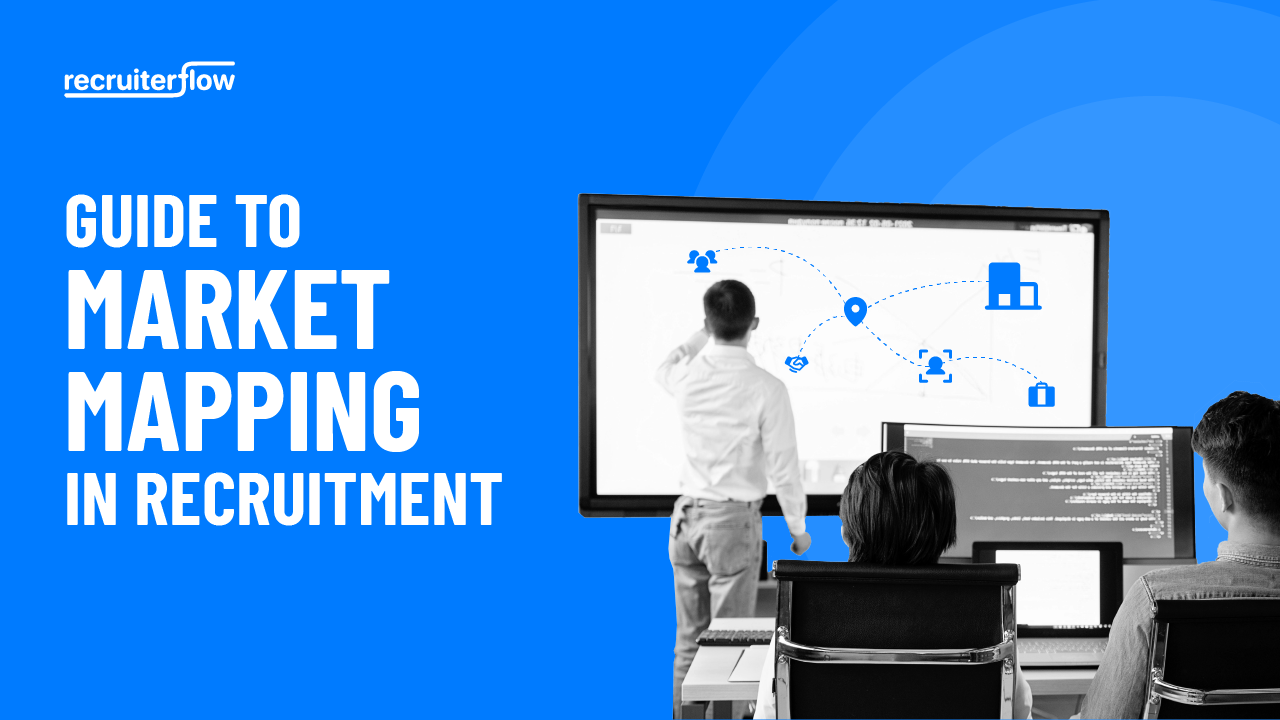
Candidate Engagement: A Complete Guide

Potential hires today aren’t just looking at the paycheck anymore. They’re checking your clients out – their whole company.
In 2025, it takes more than just a first good impression. You need to make the experience hassle-free and positive for the candidate.
Let’s talk about how to keep candidates engaged during the hiring process.
This guide will cover the ins and outs of engaging candidates, why it’s so important for your clients, and how to build a candidate engagement process that attracts the best candidates.
And yes, we’ll also discuss the best candidate engagement strategies that work in 2025.
What is Candidate Engagement?
Candidate engagement is about building real connections with potential hires throughout the recruitment process. Think of it as a two-way street. You’re not just trying to fill a job; you’re building relationships. And that’s super important these days.
In today’s crazy job market, candidate engagement can make or break your recruitment process. It’s what sets you apart from other agencies. If you treat candidates well, they’re way more likely to stick through the recruitment process.
Plus, it makes the whole hiring process smoother. And you’re less likely to have people drop out along the way. Ultimately, it helps you hire the best candidates for your clients.
Difference Between Candidate Engagement and Candidate Experience
Think of it this way: engagement is what you do, and experience is how the candidate feels about it.
| Aspect | Candidate Engagement | Candidate Experience |
| Definition | It’s all about actively interacting and communicating with candidates throughout their journey. | It’s the candidate’s overall impression and feelings about your agency based on those interactions. |
| Focus | Building relationships, sharing information, keeping candidates engaged. | Shaping how candidates see your clients and your recruiting process. |
| Control | You’ve got a lot of control over this through your communication and strategies. | You have some control, but the candidate’s expectations and emotions also play a big part. |
| Goal | Keep candidates informed, engaged, and interested in the job and your client. | Make sure candidates have a positive impression, no matter what the outcome. |
| Examples | Sending personalized updates, answering questions, keeping in touch over time. | Candidates feeling respected during interviews, getting feedback quickly, having a smooth application process. |
So, candidate engagement is what you do to interact with candidates. Candidate experience is what they get out of those interactions.
A good engagement strategy usually leads to a good candidate experience, but it’s not a guarantee. You can be super engaged, but if the application process is a nightmare, the experience will still be bad.
It’s important to focus on both candidate engagement and experience. That way, you not only attract great candidates for your clients, but you also leave a good impression on everyone who interacts with your agency, which is good for your reputation.
You can also read our blog on recruitment best practices to enhance your hiring strategy.
What Does the Candidate Engagement Process Look Like?
Here’s what the candidate engagement process looks like:
- Initial Outreach and Awareness: This is your first impression. You’re introducing yourself to potential candidates. Think personalized emails, social media, targeted job ads – anything to grab their attention and make them interested in your agency.
- Ongoing Communication: Once they’re interested, keep the conversation going! Regular updates, clear details about the job, and answering their questions are key. Email, texts, phone calls, and even face-to-face meetings can all work.
- Engagement During the Evaluation Process: Interviews and candidate assessments can be stressful. Make the process as smooth and positive as possible. Give clear instructions, provide feedback quickly, and make sure they feel respected.
- Post-Decision Engagement: The process doesn’t end with a yes or no. If you hire them, onboarding is the next step. If you don’t, keep the relationship positive – you never know what the future holds, and it builds your reputation.
You want to make a good impression at every stage. That way, even if they don’t get this particular job, they might think of your clients down the road. It’s about building a strong talent pool for the long haul.
Why is Candidate Engagement Important?
So, why is candidate engagement such a big deal? Well, it’s essential for attracting and keeping top talent for your clients. In today’s competitive job market, candidates have tons of options. You’ve got to keep them interested and build trust if you want them to choose your clients.
1. Enhances Candidate Experience
A FinancesOnline report showed that 75% of professionals decide whether to accept a job offer based on their experience during the hiring process. So, making the journey smooth and engaging is key.
Expert Ana Alonso emphasizes, “Engagement has to be human. Because people trust people more than brands.” Couldn’t agree more! Personalized and empathetic communication builds trust, plain and simple.
2. Reduces Candidate Drop-Off Rates
Candidate drop-offs are a recruiter’s worst nightmare. You’ve invested time and effort, and then poof! They’re gone.
Research shows that 60% of candidates never hear back after an interview, and a whopping 75% don’t get updates after applying. Consistent communication keeps candidates engaged and committed. It makes a huge difference.
3. Strengthens Employer Branding
Candidate engagement isn’t just about filling a specific role for your clients. It’s about building their employer brand. Even if you don’t end up placing a candidate, a positive experience reflects well on your clients. And that’s vital because 60% of candidates share their negative experiences.
A strong employer brand, boosted by great engagement, also attracts passive candidates—the ones who aren’t actively looking but might be tempted by the right opportunity.
4. Improves Hiring Efficiency and Quality
Engaged candidates respond faster. That means quicker decisions and a faster hiring process overall.
Plus, good engagement helps candidates understand your client’s company culture and values, which leads to higher-quality hires.
5. Build a Long-Term Talent Pipeline
Candidate engagement isn’t a one-and-done thing. Keep those relationships going, even with candidates you don’t hire right now. They could be perfect for a different role later. This:
- Builds a talent pool for the future
- Saves you time and money on talent sourcing
- Gives you a steady stream of qualified candidates
Expert Takeaway
As recruitment expert Vivek Wadhwa puts it, “Recruiting talent is no different than any other challenge a start-up faces. It’s all about selling.” Candidate engagement is your sales pitch. It’s what keeps candidates hooked and interested in your client.
Also read: 9 Recruitment Trends that are Shaping 2025
How to Improve the Candidate Engagement Process: A Strategic Approach
Here are the steps to improve your candidate engagement process:
1. Define Your Ideal Candidate Profile (ICP)
First things first, you need to know who you are looking for. You get started by defining what is called an Ideal Candidate Profile (ICP). What is an ICP? Think of it as a description of your dream hires for a specific job.
It’s like, if you could create the perfect employee, what would they be like? This is crucial because it helps you target the right people and tailor your approach.
So, how do you figure out your ICP? Good question!
First, look at your rockstar employees. What skills do they have? What are they good at? What makes them so awesome? That gives you a starting point.
Then, talk to the hiring managers. They know what the job actually needs. What skills, experience, and personality traits are essential? What kind of person would thrive in that role?
Next, you group candidates together, say, based on their qualifications or where they are in their careers. This helps you target your message.
Finally, think about their personality. Are they a good fit for their culture? What motivates them? What are they passionate about?
By really nailing down your ICP, you can focus on the candidates who are most likely to succeed.
2. Map Out Your Ideal Candidate’s Journey and Touch Points
The candidate journey is just all the interactions a potential hire has with your client, from the moment they first hear about you to their first day on the job.
Mapping this out helps you find ways to make the whole experience better. Think of it like, where could things go wrong, and how can you make them awesome instead?
Stages of the Candidate Journey
Awareness
This is where candidates first learn about you. Maybe they saw a job posting, checked you out on social media, or heard about you from a friend. Your employer brand is key here; make sure it’s strong and consistent.
Consideration
Now they’re thinking, “Hmm, is this company a good fit for me?” They’re checking out your client’s mission, their culture, and what kind of benefits they offer. They want to know if their values align with theirs.
Interest
They’re getting interested! They might engage with your content or even apply for a job. This is a big step, so make sure you’re ready to respond and keep that excitement going.
Application
Time to apply! They’re sending in their resume and filling out applications. This process needs to be straightforward. Nobody wants to wrestle with a clunky application system.
Selection
Time for interviews and assessments! This can be stressful for candidates, so keep them in the loop. Give them timely updates and feedback. Make them feel valued.
Hiring
They got the job! Woohoo! Now they’re accepting the offer and getting ready to join the team. Exciting times!
Onboarding
First-day jitters? Make them feel welcome! A good onboarding process helps new hires get comfortable with the company culture and their new role. You want them to feel supported and ready to contribute.
How to Map Touch Points
1. Identify Key Interactions
List every interaction a candidate might have with your brand. Job ads, career pages, interviews, follow-ups – the whole shebang. A visual map can be super helpful here.
Get everyone involved – HR, marketing, hiring managers. Make sure you’re not missing anything.
2. Evaluate Candidate Experience
Conduct surveys. Ask candidates what they thought of the process. What was good? What could be better? Get specific!
Pro tip: Use a QR code generator to create a QR code that links to your feedback survey. It makes sharing insights from mobile devices super easy and quick!
Then, look for patterns in the feedback. What are the common pain points? Where are things going smoothly?
3. Optimize Weak Areas
Find the problem areas. Are you taking too long to respond to candidates? Is your communication unclear? Fix it!
Keep asking for feedback. Always look for ways to make the journey even better. It’s an ongoing process.
A well-mapped candidate journey makes the whole experience positive for everyone, and that makes it way more likely you’ll hire the best talent.
3. Determine the Most Effective Channels Based on Your ICP
Do you now know who your ideal candidate is? Great! But where are they hanging out? That’s what we have to figure out next. You want to make sure you’re fishing where the fish are, so to speak.
Popular Channels for Candidate Engagement
- Professional Networks: LinkedIn is your best friend here. It’s perfect for finding people who aren’t actively looking for a job but might be open to the right opportunity (passive candidates). It’s also great for building connections.
- Social Media: Think Twitter, Instagram, Facebook. These platforms are awesome for showing off your client’s company culture and attracting younger folks. Plus, who doesn’t love a good meme?
- Email Campaigns: Don’t underestimate the power of a personalized email. It’s a direct way to reach out to candidates and grab their attention.
- Job Boards: Post your openings on job boards that specialize in your industry or the type of role you’re trying to fill. Niche job boards for the win!
- Employee Referrals: Your client’s current employees are your secret weapon! They know what it takes to work at their company. Tap into their networks to find some top-notch candidates.
Tailoring Channels to Your ICP
Okay, so let’s get specific. Your ICP is your guide here.
- Looking for tech wizards? Skip the university job fair and head straight to GitHub and Stack Overflow. That’s where they live.
- Need an executive? LinkedIn and industry events are your jam. Think of high-level networking.
- Hiring for entry-level positions? University job fairs and social media campaigns are your best bet.
4. Choose the Right Candidate Engagement Software
The right software can automate a lot of the grunt work, keep track of everything, and even give you insights into how candidates are behaving.
Features to Look For
- Automation: Think personalized emails, reminders, updates – all sent automatically.
- Candidate Relationship Management (CRM): This is all about building and keeping those relationships going. Think long-term!
- Analytics: Look for platforms that track things like email open rates and how many people are finishing their applications.
- Integration: Your new software needs to play nicely with your Applicant Tracking System (ATS). Seamless data management is key!
Best Candidate Engagement Software
Here are some of the top contenders:
1. Recruiterflow
A full-blown recruitment CRM and ATS; it continues to expand its candidate engagement capabilities. It’s got everything – automation, CRM, outreach, analytics – the whole nine yards.
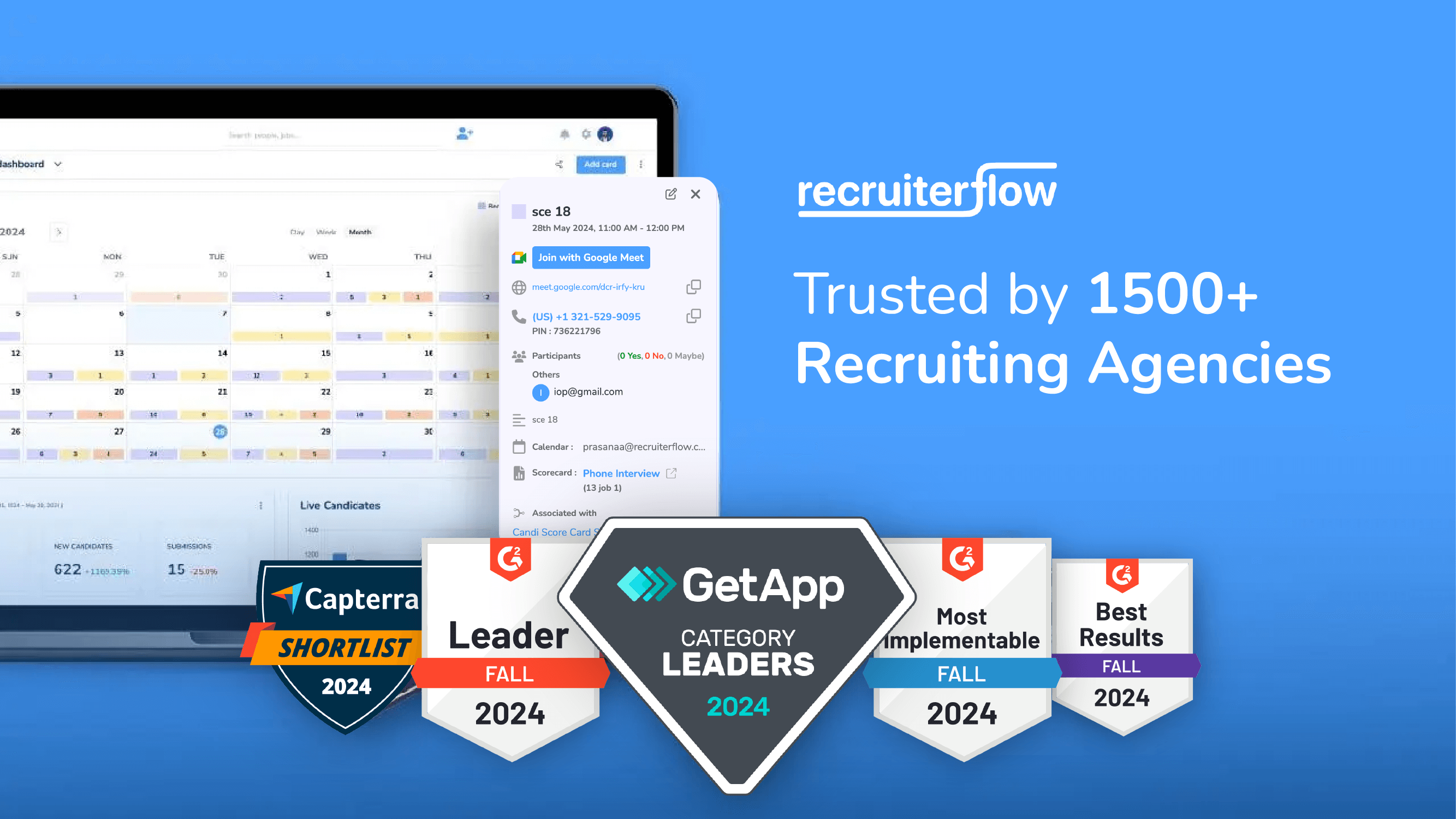
Best for:
Multi-Channel Outreach
Recruiterflow lets you connect with candidates where they are, whether it’s email, texts, or even social media. You’re way more likely to get a response if you meet them on their turf.
Automation for Efficiency and Consistency
Recruiterflow automates all the boring stuff. Emails, texts, updating statuses, even scheduling interviews – it’s all handled automatically. This frees you up to talk to people and build relationships.
Long-Term Candidate Relationship Management
What happens to candidates who aren’t a perfect fit right now? Usually, they disappear into the void. Not with Recruiterflow! It keeps them in your system for future opportunities.
Email Sequencing for Personalized Communication
You can set up automated email campaigns that guide candidates through the whole hiring process. Think personalized emails for each stage – initial contact, follow-ups, interview prep, etc.
Re-Engagement with Passive Candidates
Ever had that perfect candidate who just wasn’t looking at the time? Recruiterflow lets you reconnect with them, even if they’re not actively job hunting. You never know when they might be ready to make a move.
Engagement Analytics
Recruiterflow tracks all the data for you – response rates, engagement levels, time-to-hire, etc. This way, you can see what’s working, and tweak your approach accordingly.
Seamless Integration with Existing Systems
Recruiterflow plays nicely with other recruiting tools, so you can easily import candidate data and keep everything organized in one place. No more data silos!
Ideal for:
Recruiting agencies, staffing firms, and executive search businesses of all sizes. Especially good if you’re looking to scale up and improve collaboration.
Pricing:
Base (starts at $85/user/month), Pro ($90/user/month), and Advanced ($99/user/month). You also get a 14-day free trial, so you can check it out before you commit.
2. Beamery
A top-notch candidate engagement platform. Combines talent acquisition, CRM, and marketing automation. Focuses on building long-term relationships.
Best for: AI-powered candidate recommendations, automated email and SMS campaigns, a talent CRM, and analytics.
Ideal for: Big companies and multinationals with massive talent pipelines.
Pricing: You have to contact their sales team for a quote.
3. Sense
Focuses on automating communication and making the candidate experience awesome. Super popular with staffing agencies and recruitment firms.
Best for: Automated texts and emails, real-time candidate feedback, onboarding workflows, and engagement tracking.
Ideal for: Staffing agencies and recruitment firms dealing with tons of candidates.
Pricing: Custom pricing – you’ll need to request a demo.
4. Lever
A flexible ATS with a strong emphasis on candidate engagement. Combines ATS and CRM features.
Best for: Candidate relationship management, diversity hiring, and collaborative hiring.
Ideal for: Mid-sized companies and startups.
Pricing: Tiered plans – you’ll have to reach out for details.
5. iCIMS
A complete talent acquisition platform. Candidate engagement is built-in. Focuses on recruitment marketing.
Best for: Recruitment marketing campaigns, targeted messaging, and integration with other HR tools.
Ideal for: Large enterprises with complex recruitment needs.
Pricing: Custom pricing – request a demo.
6. Brazen
A virtual hiring and candidate engagement platform. Specializes in virtual career fairs.
Best for: Virtual career fairs, real-time chat and video with candidates, and employer branding.
Ideal for: Organizations looking to reach candidates remotely.
Pricing: Flexible plans based on events and participants.
7. IdealTraits
Designed to help recruiters with personalized communication and streamlined hiring. Focuses on improving the candidate experience.
Best for: Personalized communication, automated workflows, and candidate experience.
Ideal for: Small to mid-sized businesses.
Pricing: Flexible plans – request a demo.
5. Implement Strategies to Improve Candidate Engagement
Here’s the inside scoop on some strategies that work in 2025.
Personalized Multi-Channel Outreach
Multi-channel outreach is key. Everyone’s on different platforms these days. Don’t just rely on email. Hit them up on social media, text them, or send a message on LinkedIn – whatever works best for your ideal audience.
Some candidates prefer a quick text, while others are more likely to read a detailed email. You could use Recruiterflow to send personalized texts to passive candidates. And at the same time, you could run email campaigns for active job seekers. This way, you’re covering all your bases and reaching candidates in the way they prefer.
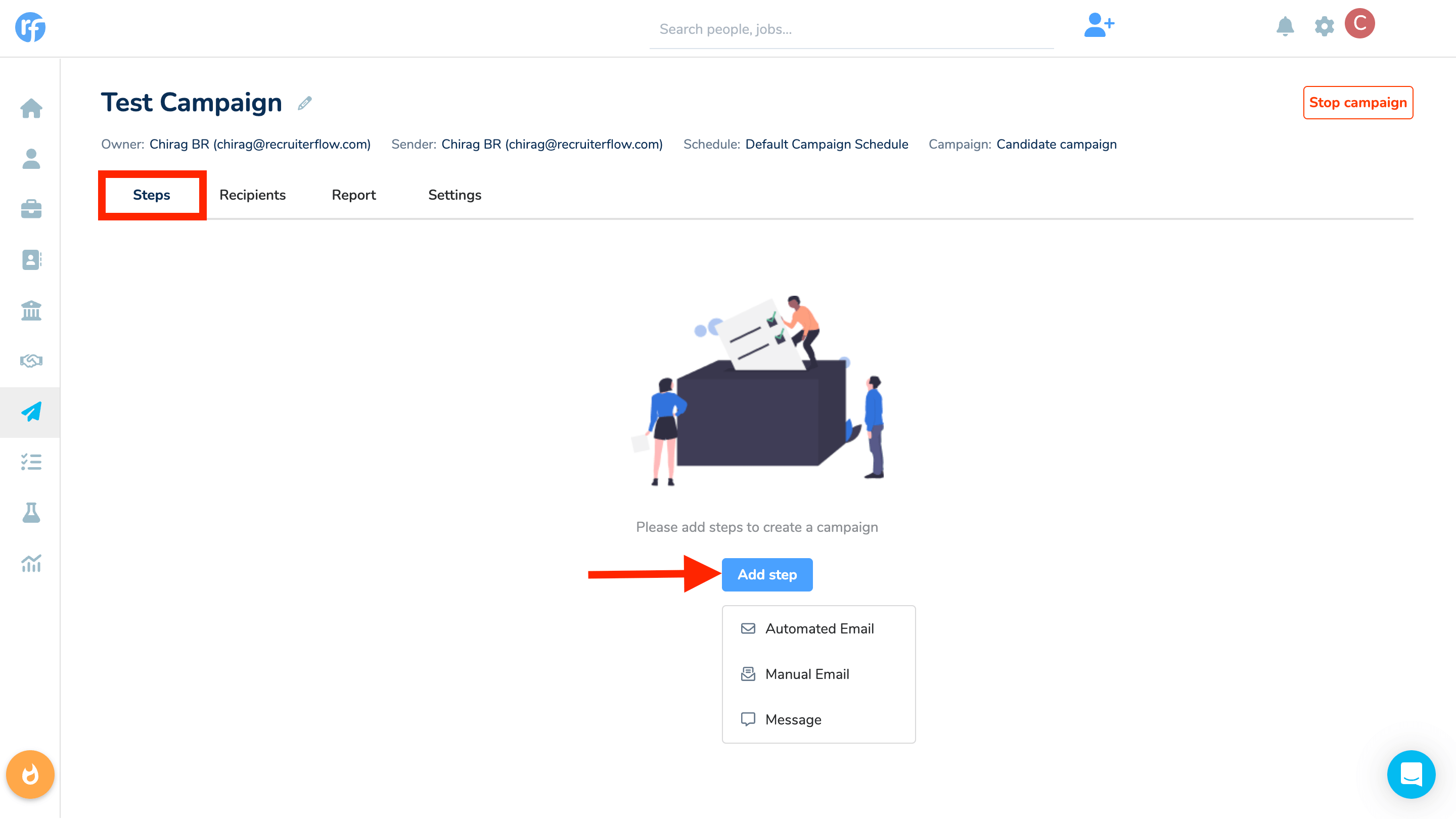
And make sure to segment your audience. Recruiterflow helps you group them by skills and interests so your messages hit home. Just make sure your core message stays consistent across all platforms, even if you tweak it a bit for each one.
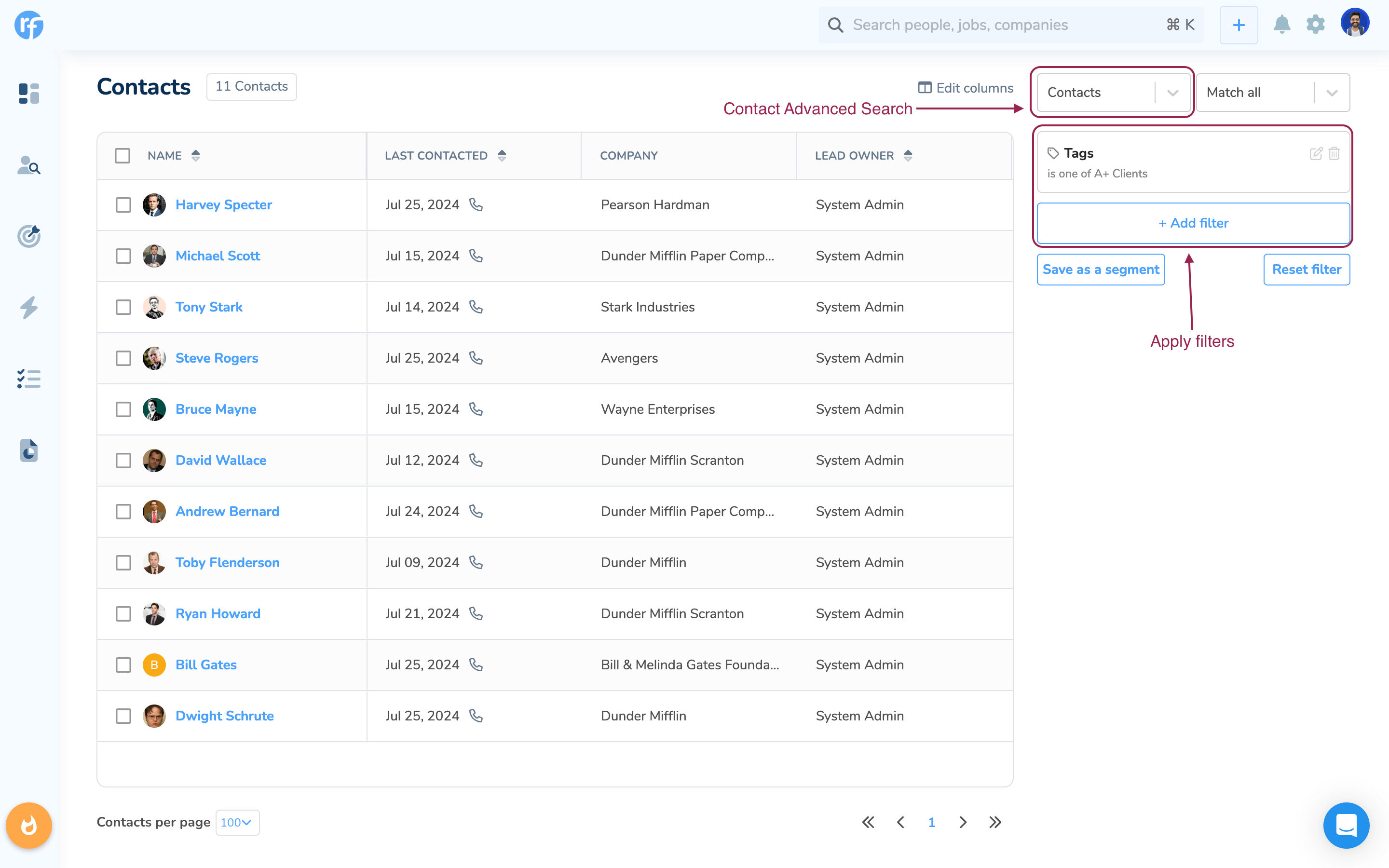
Proactive Updates
Keep candidates in the loop. To quote Edward Mellett, Director at Wikijob, “After you’ve reviewed the initial applicants, your hiring team should make an effort to communicate with candidates on a frequent basis throughout the hiring process.”
Send automated updates about their application status. For example, you can use Recruiterflow to automate follow-up emails after an application is received or schedule reminders for interview confirmations. This saves you a ton of time and makes sure no one gets forgotten.
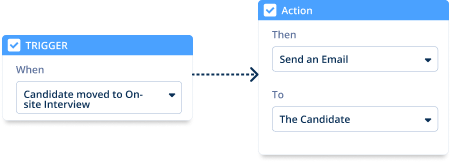
Be upfront about timelines too. Let candidates know what to expect. When will interviews happen? When will you make a decision? A simple visual timeline can really help.
Also, give feedback after interviews, even if they don’t get the gig. It’s just common courtesy, and it shows you respect their time.
Showcase Employer Value Proposition (EVP)
Show off what makes your client awesome! Videos are your best friend here:
- Show off their company culture
- Share their employees’ testimonials
- Talk about growth opportunities
YouTube and Vimeo are great places to share this stuff.
Share employee success stories too. Blog posts and social media content about employee career paths are inspiring. They show candidates what’s possible at their company.
Keep your social media channels active with posts about their values, events, and community involvement. Eye-catching visuals are a must!
Engage Beyond the Application
Avoid ghosting candidates after they apply. Share industry reports, webinars, white papers – anything that positions you as a thought leader. It keeps candidates engaged and shows you know your stuff.
You can also host networking events. Virtual or in-person, these events are great for building relationships. Candidates get to meet your team and learn more about your company firsthand.
And think about building a talent community, like a Slack or Discord group, where candidates can connect with each other and your brand.
Referral Programs
Referral programs are where it’s at. Nathalie Walton, Co-founder of Expectful, says “Utilizing your current employees to draw in new candidates can help increase engagement during the hiring process.”
She further points out that “Your employees should be your biggest brand ambassadors when it comes to attracting new people to apply for open positions.” And we totally agree!
The key is to reward employees for hooking you up with great candidates. Bonuses, gift cards, whatever works. Make sure your employees know about open positions and how they can refer people.
And track your referral success rate to see what is working and make adjustments as needed.
Also read: 10+ Actionable Tips to Improve Candidate Experience
6. Measure Candidate Engagement
So you’ve got your candidate engagement strategy in place. Awesome! But how do you know if it’s working? That’s where measuring comes in. You have to track some key metrics to see what’s hitting the mark and what’s falling flat.
Key Metrics to Monitor
- Response Rates: How many candidates are replying to your messages? If nobody’s responding, you know something has to change.
- Application Completion Rates: Are people starting the application but not finishing it? If so, where are they dropping off? Is the application too long or confusing?
- Interview Attendance: How many candidates are showing up for their interviews? No-shows are a bad sign.
- Time-to-Hire: How long does it take to get someone through the whole hiring process? A long, drawn-out process can turn candidates off.
- Candidate Satisfaction: Ask candidates what they thought of the experience. Surveys are your friend here. Were they happy? What could be better?
- Drop-Off Rates: Where are candidates losing interest? Identify the stages where they’re bailing out and figure out why.
See How Recruiterflow Can Help with a Free Demo
With Recruiterflow, you get everything you need to roll out a comprehensive candidate engagement strategy. Not only that, it’s an AI-first command center that helps you manage all your agency’s recruitment operations.
It’s the only platform your agency needs to optimize all its recruitment operations:
- Integrated ATS & CRM
- Centralized candidate database
- Top-notch recruiting automation
- Multi-channel outreach (Email, SMS, Call & Socials)
- AI-first screening and sourcing tools
- Data enrichment capabilities
- Advanced reporting and analytics
- Open APIs and a host of integrations
Scott S., a Recruitment Specialist, reviewed us on G2Crowd:
“I’ve been using Recruiterflow, and it’s been a game-changer for streamlining my recruitment process. The automation tools for campaigns to candidates, LinkedIn, email integration, and customizable pipelines make managing candidates and clients so much easier. I love how it cuts down on manual work, letting me focus on building relationships instead of chasing admin tasks.”
See it in action now: Book a free demo
Recruitment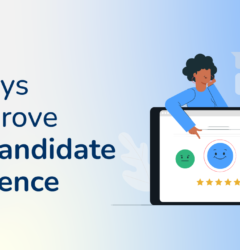



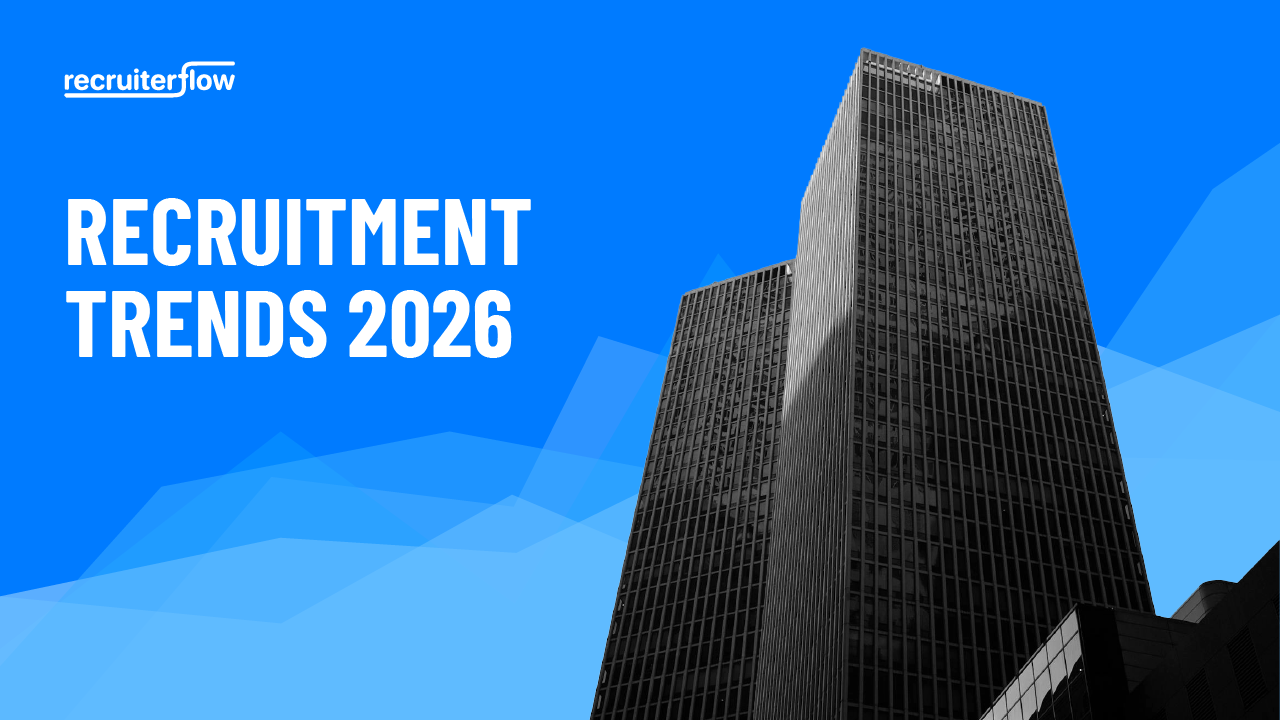

Pragadeesh Natarajan